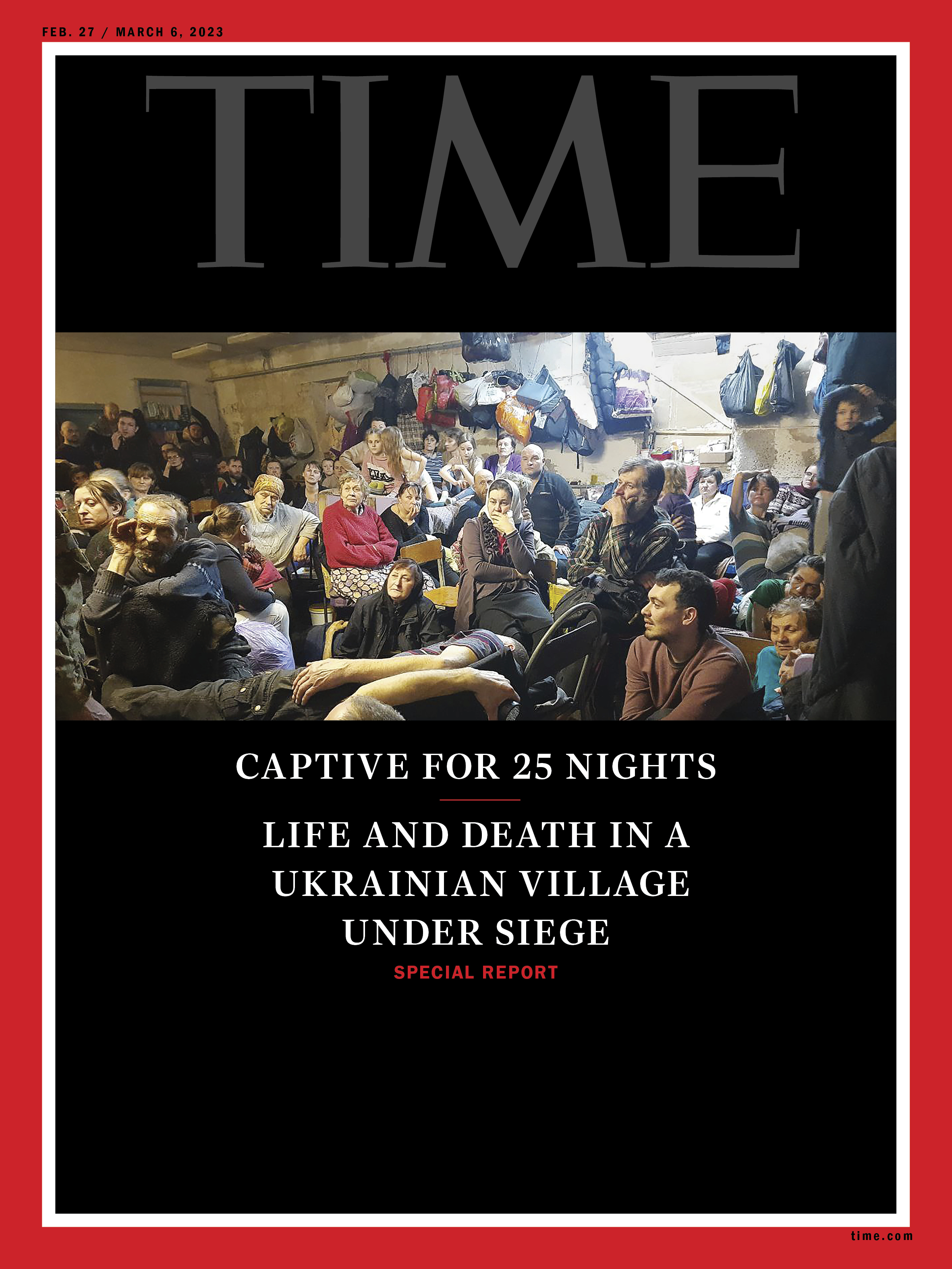Ukraine: The Reckoning Project Reaches Millions
Testimonies form basis of articles and multimedia packages in world-renowned publications as well as a future resource of potential war crimes evidence.
The Reckoning Project has reached an audience of millions around the world with a series of stories in high-profile outlets depicting the horror of the war in Ukraine.
 |
|---|
Time cover from March 2022, photograph by Olha Meniailo Courtesy The Reckoning Project. Read on time.com |
The team, made up of Ukrainian journalists, filmmakers and human rights researchers, spent more than a year collecting hundreds of witness testimonies across the country. As well as forming the basis of articles and multimedia packages in publications including The Atlantic and Vanity Fair, they also form a future resource of potential war crimes evidence.
A Time front cover story looked at the brutal Russian occupation of the village of Yahidne, during which soldiers forced nearly 400 residents, including children and the elderly, to live in a school basement for almost a month. Edited by author and academic Peter Pomerantsev, a senior member of The Reckoning Project team, the project included a film which was also widely screened.
Another multimedia story, screened by Vanity Fair in October 2022, highlighted the unlawful deportation of Ukrainian children to Russia; a potential war crime for which the International Criminal Court (ICC) later issued an arrest warrant for Vladimir Putin and his ombudsman Maria Alekseyevna Lvova-Belova in March 2023.
The film focused on Evgeny Mezhevy, whose children were kidnapped by Russian forces in Mariupol and taken to Russia.
“His three kids were separated from him in a filtration camp and kept by ‘social workers,’” explained The Reckoning Project’s lead journalist Nataliya Gumenyuk, the co-founder and CEO of the Public Interest Journalism Lab. “Later, at the end of May, the children were taken to a children’s sanatorium near Moscow, where they were forced to consent to temporary adoption by Russians.”
The film’s screening inspired a public campaign to return illegally deported Ukrainian children back home, and the Mezhevy family later testified to Ukrainian prosecutors as well as speaking to the ICC and giving numerous media interviews.
Another multimedia project, published in The Atlantic by Gumenyuk and renowned author Anne Applebaum, examined abuses by Russian occupation authorities in the Kharkiv and Kherson regions. The text drew on testimonies gathered on the ground by The Reckoning Project researchers Natalia Bimbiraite, Oleh Baturin and Natalia Kurdiukova. It not only provided an insight into the Russian occupation, but also the inability of the de facto authorities to control the territory.
The Hospital That Was Taken Hostage, TRP’s third project with Vanity Fair, told the story of the medical centre in Snihurivka, a small but strategically important town between Kherson and Mykolaiv regions that was occupied in mid-March 2022.
Staff and patients spent two months under occupation, threatened and intimidated by Russian soldiers while secretly treating villagers and trying to pass messages to the outside world.
“So far it is the most solid publication existing which tells the story of what had happened to the hospitals under the occupation,” said Gemunyuk. “We believe this project may play a crucial role for support to Ukraine among the professional communities.”
Other Reckoning Project articles looked at attacks on hospitals as part of wider parallels between past Russian military action in Chechnya and Syria ahead of its invasion of Ukraine.
Ukrainian journalist Angelina Kariakina looked into the pattern of attacks on hospitals and maternity wards in Aleppo and Grozny as well as in Mariopol. Kariakina, herself pregnant at the time, researched the experiences of Ukrainian, Chechen and Syrian mothers, doctors and other witnesses.
Renowned war reporter and IWPR project director Janine di Giovanni, who covered the conflicts in Chechnya and Syria, also used testimonies gathered by TRP researchers to explore Putin’s tactics of targeting civilians in an article for Vanity Fair.
“The approach allows us not just to tell another tragic story but add to the debate why Vladimir Putin should be finally stopped in Ukraine, especially because he was not stopped in Syria and Chechnya,” said Gemanyuk.
Between May 2022 and March 2023, more than three million people accessed the project’s high-quality content, which was also widely shared on social media channels by international opinion makers including political scientist Francis Fukuyama, historian Timothy Garton Ash and Human Rights Watch founder Kenneth Roth
Gumenyuk explained that the project also aimed to combat a level of fatigue over the war building both internationally and in Ukraine. As well as memorialising key crimes in the conflict, The Reckoning Project reached new audiences abroad.
One example was the story and accompanying film documenting the massive March 3, 2022 aerial bombardment of Chernihiv which killed at least 47 people and wounded many more. The Chernihiv: Airstrike On Chornovola project explored the devastating human impact a single attack can have on the lives of ordinary people.
The package was first published in Ukrainian by the country’s leading newspaper, and then republished in regions including Latin America and southern Africa. In the Philippines it was republished by Rappler, the project run by Nobel Peace Laureate Maria Resa and widely read across the whole South East Asia region.
“We took an alternative distribution strategy with the story,” Gumenyuk said. “For us it was important to reach an audience outside of the US and Europe who was less aware about the real-life impact of the war on the Ukrainians. We know that one story can’t change audience views, however, we believe that even the fact of this publication and collaboration opened the window of opportunity for further work and interest.”
